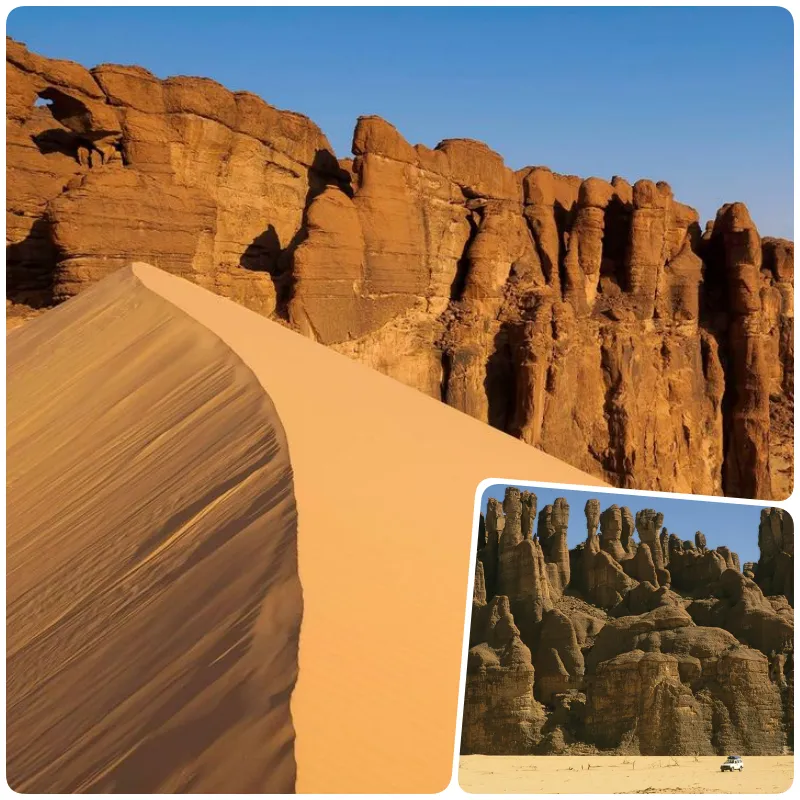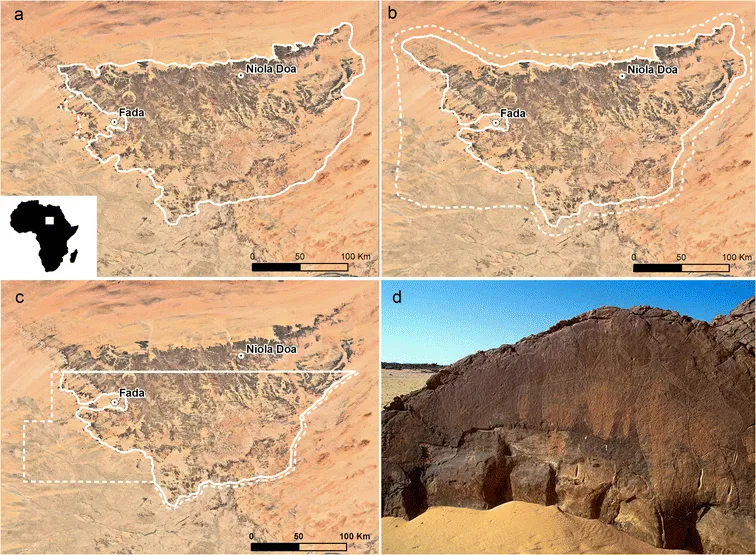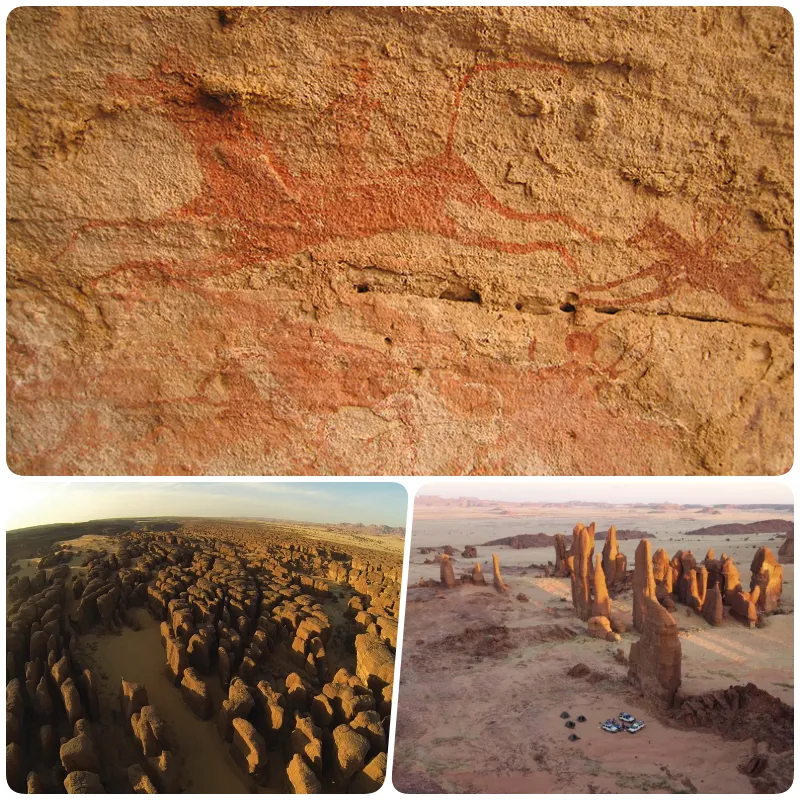
Africa’s mysterious geological wonder: the Ennedi Massif
Nestled in the northeastern region of Chad, a country in Central Africa, the Ennedi massif covers an area of about 60,000 square kilometers, with its highest peak reaching 1,450 meters above sea level. This remote plateau, deep in the Sahara Desert, is famous for its extraordinary rock formations, vast sea of sand, and reputation for being “less explored than the Moon.” Ennedi Massif is a treasure trove of prehistoric human traces, with an estimated 75% of the area still unexplored.
Known as the “Wall of the Desert”, the Ennedi Massif is famous for its dramatic landscape of towering rock formations stretching across the barren desert, like an imposing natural barrier. These cliffs and rock walls are not continuous; rather, they have been shaped by wind and rain over millions of years into a spectacular array of towers, domes, columns and ridges. The massif is located about 1,000 kilometers from Chad’s capital N’Djamena, a journey that usually takes four days due to the rough terrain.

Remoteness and war-torn conditions have put Ennedi Massif out of reach for many researchers, leaving about 75% of the area unexplored. Despite the scarcity of research, Ennedi Massif has become globally famous for its “desert wall” landscape, captivating with towering rock formations of diverse shapes, devoid of vegetation due to the climate arid. From a distance, these formations look like desert walls.
More than 7,000 years ago, the Ennedi massif was a lush steppe, nourished by an annual rainfall of around 250mm. However, around the 6th century BC, rainfall began to decrease. By the 5th century it had decreased to 150mm per year and by the 3rd century it was only 50mm per year.
Before becoming a desert, the Ennedi massif was inhabited by prehistoric communities. Archaeological research shows that humans may have been present in the area as early as 8,000 BC, settling in large numbers around 5,000 BC. These groups were hunter-gatherers who also knew how to make pottery and had a passion for rock art.
The wide, smooth rock faces of the “desert wall” became a favorite canvas for prehistoric artists, who painted and carved scenes depicting everyday life. These works of art depict people and animals in realistic form, showing activities such as herding, hunting, and running. Photographs increasingly revealed details of daily life, technological advances, and intellectual developments, such as the invention of the carriage and the use of horses for transportation.
“For us, the Ennedi massif is like an open history book left by our ancestors,” said Angèle Aloumbe, an employee at African Parks. With no houses, roads and almost no human presence, Ennedi Massif offers a surreal journey back in time. He added: “Every visit feels like I’m traveling back to pre-Christian times, looking at the rock art, which often brings me to tears.”

True to Aloumbe’s words, Ennedi Massif is one of the most pristine regions in the world. Its location deep in the desert puts it beyond human sight. “When an Italian archaeologist came here, he discovered a 7,000-year-old piece of pottery within half an hour,” recalled Andrea Bonomo, a local tour guide.
Despite its harsh, arid climate, Ennedi Massif is home to many species of flora and fauna. Due to security issues, inaccessibility and ongoing conflict, researchers have only confirmed the presence of at least 199 migratory bird species living there. In ponds, canyons and bodies of water, desert crocodiles, famous for their short bodies and nicknamed “round crocodiles”, thrive.
With the help of camera traps, scientists have discovered a population of rare North African ostriches living in the Ennedi massif. They hope that species once thought to be extinct, such as the scimitar oryx, the Sudanese cheetah and the Ennedi tiger, may also be surviving somewhere on this remote plateau.
In 2016, the Ennedi massif was recognized by UNESCO as a World Heritage Site. Since 2018, it is protected and managed by African Parks in collaboration with the Chadian government, focusing on conservation and tourism potential. In 2019, an area of 50 km of the Ennedi Massif was designated by Chad as a cultural and natural reserve, highlighting its unique potential and significance.






